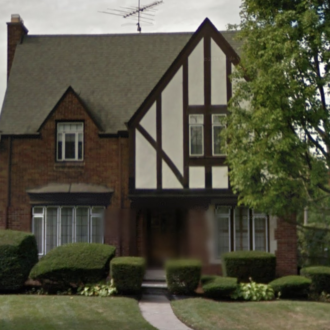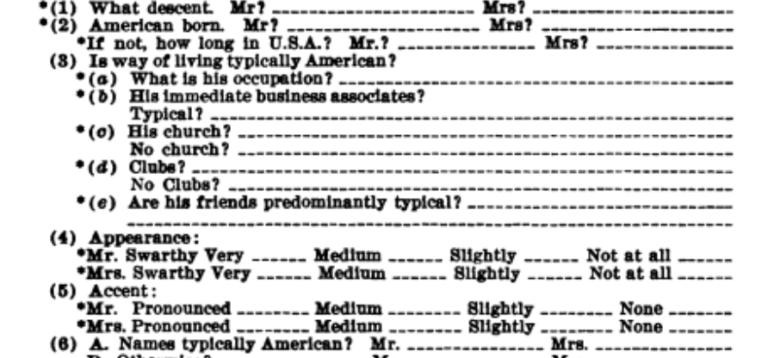
Research allows us to uncover the uncomfortable truths about our surroundings, or even our homes. I’m currently in AAS 350, an African American Studies class with Professor Keeanga Yamahatta-Taylor about the politics and policy of housing in the United States. It’s something that might seem straightforward at first — how complicated is building a house? But in reality, American housing policy and attitudes towards housing often perpetuate and preserve racist biases in the ways in which we build our communities.
For our midterm assignment, we were tasked with examining several primary sources on housing discrimination and its effects on a neighborhood. I decided to examine my hometown of Grosse Pointe, Michigan. It’s an affluent suburb of Detroit only ten miles from the city center. Yet, it has one of the starkest economic and racial divides between neighborhoods in the country. This was something that I was acutely aware of growing up — one could merely walk across a street and witness a blatant divide in opportunity — but, back then, I did not have the research methods or tools to examine why. When I took up a research paper for my African American Studies class, I resolved to find out why these divides came into being and persisted to the present day.
A large part of the residential segregation observed in Grosse Pointe is due to the implementation of a systematic, point-based discrimination system that screened out almost all religious and ethnic minority home buyers. 57 years after the official end of that system in 1960, Detroit remains 85 percent black; Grosse Pointe is 95 percent white. The median income of a household in Detroit is $26,087, while the median Grosse Pointe household income is $90,542. So, I decided to examine Grosse Pointe’s notorious point system. I dug into some archival documents from the U.S. Commission on Civil Rights, which had held hearings on this system and issued reports on civil rights abuses in the early 1960s. What I found was horrifying, even by the standards of the time.
Racially restrictive housing covenants were ruled unconstitutional in the 1948 Supreme Court Case Shelley v. Kraemer; however, private actors like real estate brokers and homeowners’ associations simply found ways to circumvent the ruling through private actions that did not involve government sanction. From 1945 until the early 1960s, the Grosse Pointe Brokers Association and the Grosse Pointe Property Owners Association implemented a system that the U.S. Commission on Civil Rights slammed as one of “mathematical exactitude” in its effectiveness at excluding ethnic and religious minorities. Prospective homebuyers were rated on a scale by a panel of three realtors for their “suitability” for the neighborhood. If they cleared a certain point threshold, then they would be allowed to buy a house. But it was not a fair test.

Criteria for prospective homebuyers ranged from whether their “way of living was typically American,” to their religion, to even a direct appraisal of the darkness of their skin. The point threshold required to pass the test shifted significantly based on the applicant’s ethnicity, and Asians and African Americans were entirely excluded. Latinos were not even mentioned.
As described by Michigan Corporation and Security Commissioner Lawrence Gubow in 1960 U.S. Commission on Civil Rights hearings, those of “Polish descent had to score 55 points; southern Europeans, including those of Italian, Greek, Spanish, or Lebanese origin, had to score 65 points; and those of the Jewish faith had to score 85 points. Negroes and Orientals were excluded entirely.” And if a Jewish person managed to score above 85 points, they would go through an entirely separate screening process that they were intended to fail. If a person did not pass the point test, their name was effectively blacklisted to all Grosse Pointe real estate brokers, and they would not be able to buy a house. If a broker was found to have violated the terms of this system, then he would be cast out of the broker’s association.
The point system was so blatantly discriminatory that it’s almost unthinkable today. But it is these systems of oppression that help to explain the current state of our world and the divides that so stubbornly refuse to recede into the past. We’ve come a long way since the point system, but it’s still up to us to research how our world works and what we can do to rectify these inequities. I could go on for much longer about the historical inequities we see reflected in our systems of housing, but to end on a somewhat more positive note, here’s a historical footnote to the whole story.
So — how, might you wonder, would a Chinese-American immigrant family end up in Grosse Pointe in the 1960s? First, my grandparents rented an apartment, altogether bypassing the realtors. Then, when it came time for them to buy a house, they bought one directly from a Greek lawyer (no ally of the point system, as a Greek man), who in turn had bought the house from a contractor who had gone bankrupt building it. In doing so, they were able to circumvent the entire point system and settle down in the neighborhood. And the rest is history. Now, it’s on all of us to research these problems, bring them to the forefront of discussion, and then work to dismantle these systems of inequality and oppression.
–Nicholas Wu, Social Sciences Correspondent

